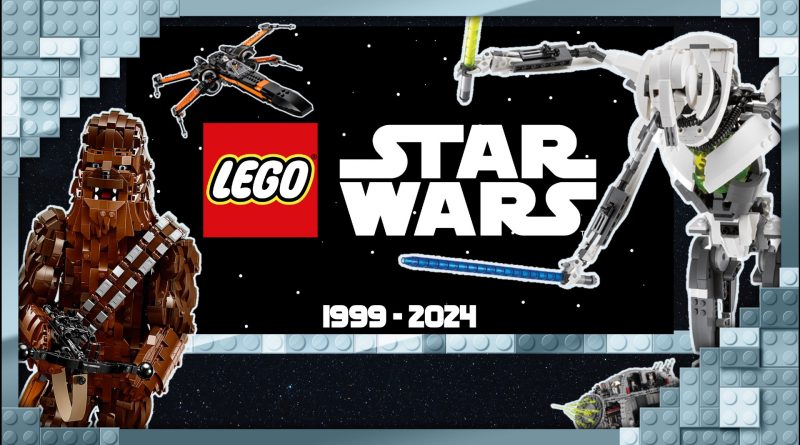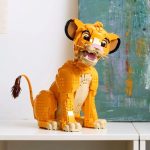Tracing 25 years of LEGO Star Wars sets, from the weird to the wonderful
From the early days of LEGO Star Wars to the modern disposable age, journey back through the entire brick-built timeline of a galaxy far, far away.
LEGO Star Wars turns 25 years old in 2024, and to celebrate we’re scrutinising the sets, minifigures and stories that have encompassed the past quarter-century of product releases. But before we can dive into the details, we need to examine the big picture. That means charting two and a half decades of LEGO Star Wars sets to see how far the theme has come, the tangents it’s taken along the way, how we’ve ended up where we are right now – and what that means for the LEGO Group in 2024.
If you haven’t seen it already, make sure to catch up on the inside story of where it all began in 1999, and why not everyone at the LEGO Group was immediately on board with the concept of lightsabers, X-wings and Stormtroopers. Otherwise, get comfy: we’ve got a lot of ground to cover.
The early days of LEGO Star Wars
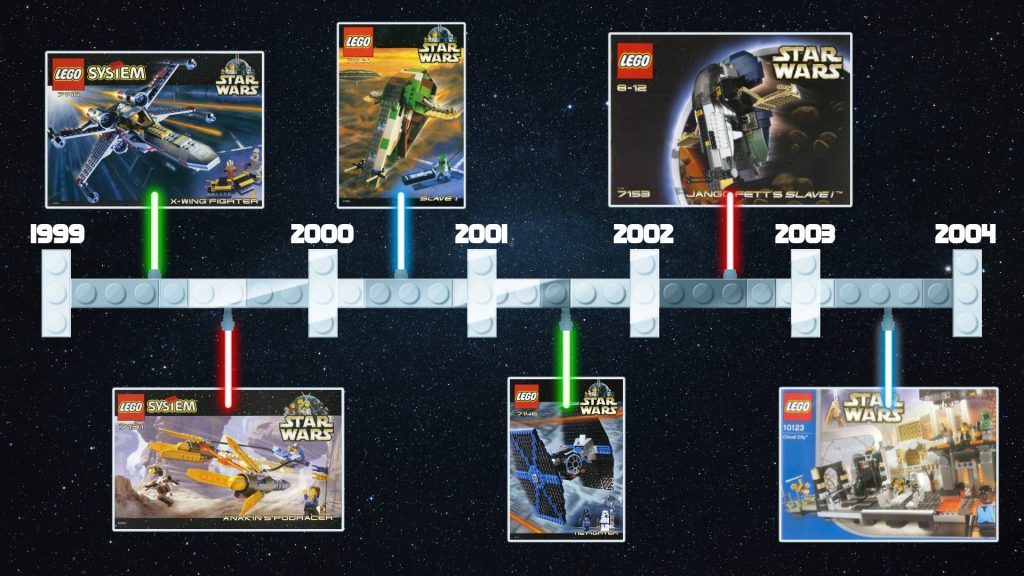
While the LEGO Star Wars theme spans hundreds of sets and more than 1,300 minifigures in 2024, the LEGO Group initially decided to test the waters with only a handful of sets in 1999. The launch wave arrived ahead of The Phantom Menace and tipped its hat to icons from the original trilogy, including the X-wing, Landspeeder and Snowspeeder.
“There was not a lot of extra fluff in the assortment and part of that was because we weren’t sure how successful it was going to be,” the LEGO Group’s Senior Vice President Jill Wilfert told Brick Fanatics in 2019. “One of the things that worked quite well for us compared to the industry was that other toy companies went a bit overboard and there was a feeling of hangover; there was just too much. The LEGO Group had the opposite – we couldn’t meet demand because relatively we had more conservative expectations.”
The success of that first wave taught the LEGO Star Wars team a few key lessons (build more X-wings, Landspeeders and Snowspeeders, for one), but it was in the initial assortment of Episode I sets – which arrived on shelves only a few months later – that things started to get really juicy from a design perspective.
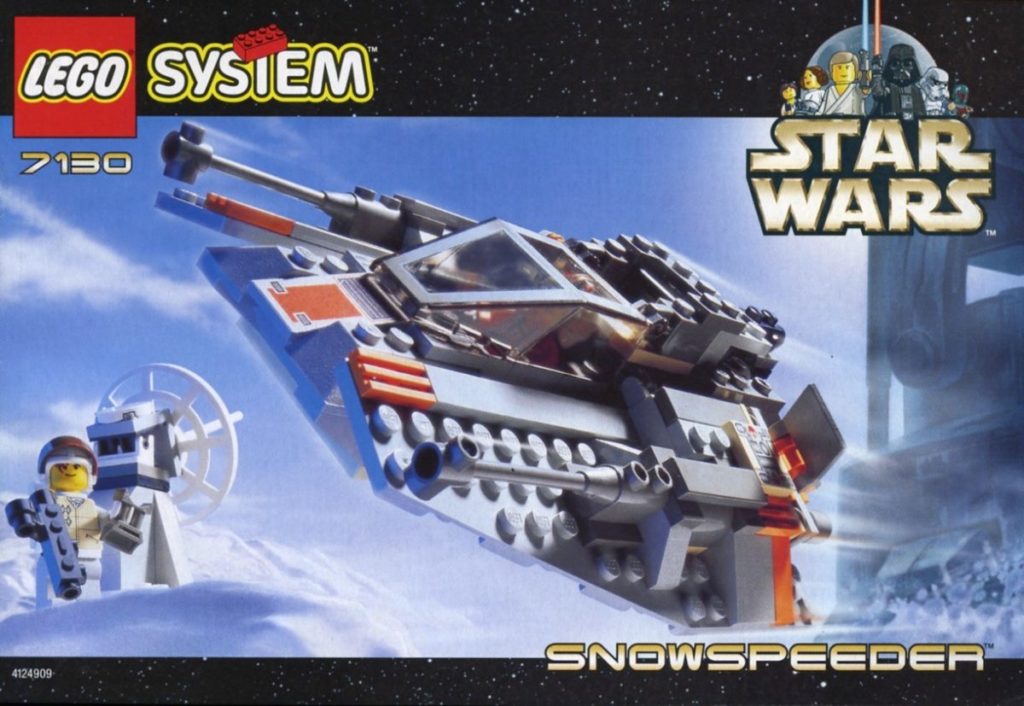
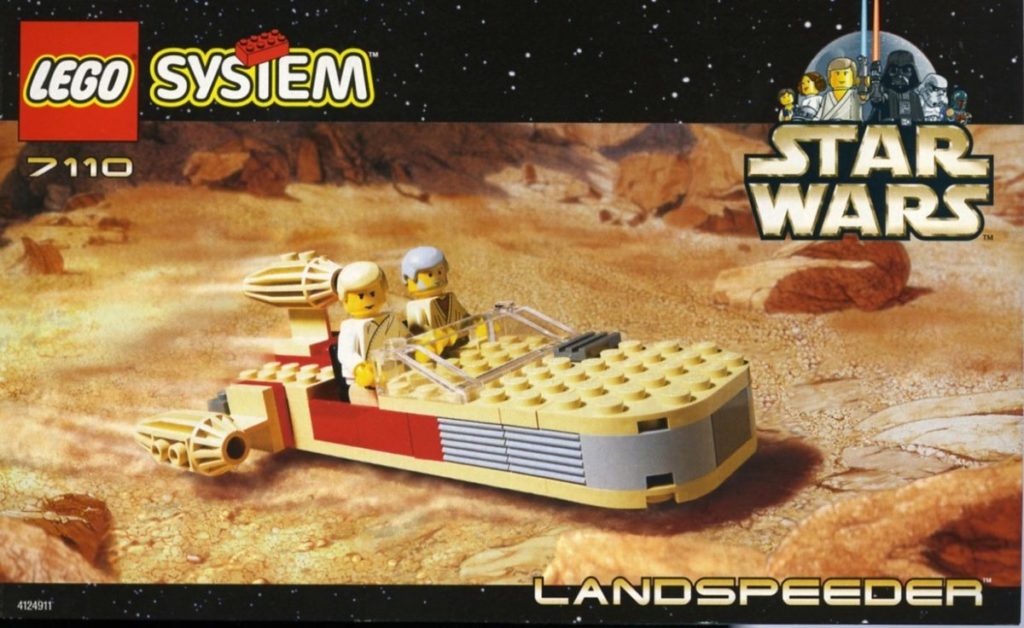
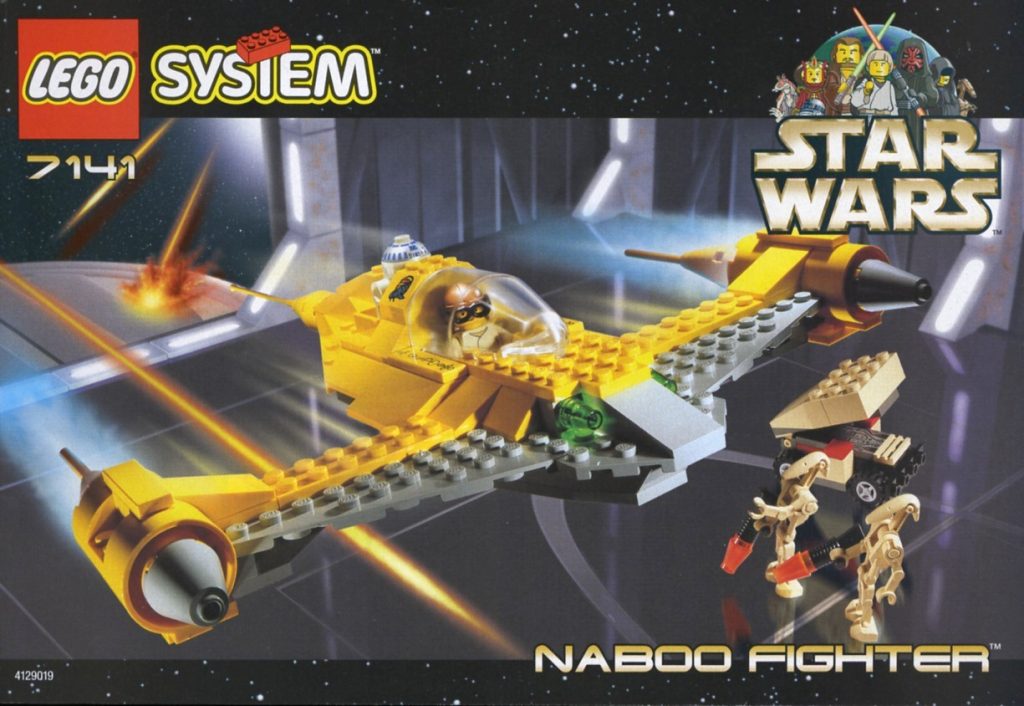
“We needed to decide how we were going to create all the characters and aliens that are seen in the Star Wars universe,” LEGO Star Wars Creative Lead Jens Kronvold Frederiksen, who joined the theme full-time after working on sketch models for the launch wave, told Laughing Place. “That’s when we decided that some characters, if they’re human-like, then we would normally use the regular minifigure head and just decorate the character’s [face] on it. But if it’s alien, then we would do the sculpted heads.”
The honour of the first-ever sculpted minifigure head subsequently went to Jar Jar Binks for The Phantom Menace, and it wouldn’t be the last time the LEGO Star Wars theme claimed a ‘first’ for the LEGO Group as a whole. But it wasn’t only in the minifigures that those early sets threw up unforeseen curveballs for the LEGO Group, which until now had operated almost exclusively within the realms of its own imagination.
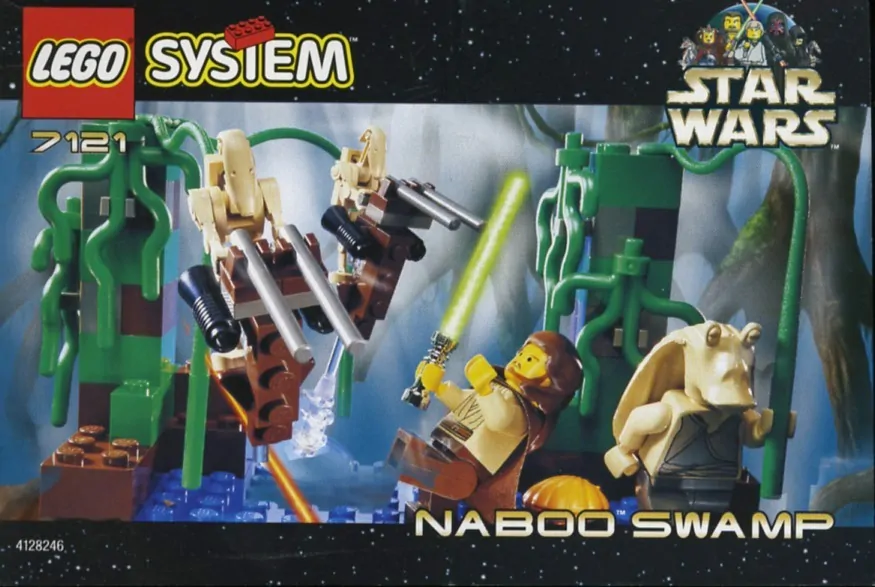
Having to create models based on someone else’s designs proved tricky, especially when working exclusively from early drawings rather than analysing every frame of the finished film. That was especially true of gravity-defying vehicles like the Podracers, which formed such a core part of the Phantom Menace’s action sequences that they couldn’t be ignored by the LEGO Star Wars team.
“I remember that as one of the first new challenges regarding the models,” Jens added. “We have this weird vehicle, and of course we hadn’t seen the movie. We got some drawings – Doug Chiang’s concept art – that we received as the first reference. There are two engines that are hovering in the air and a little cockpit in the back; how are we going to do that as a toy so that a kid can actually play with it? I would say that was one of the most challenging things in the beginning.”
The years that followed saw new parts abound, for both minifigures and sets, as the LEGO Group did its best to tackle the unusual shapes of Star Wars spacecraft as best it could. This was an era of rapid progression, too: compare the blocky 7144 Slave I to the much sleeker 7153 Jango Fett’s Slave I, released only two years later. The earliest LEGO Star Wars sets might not have looked like much, but they very quickly had it where it counts.
Gimmicks and galactic expansion
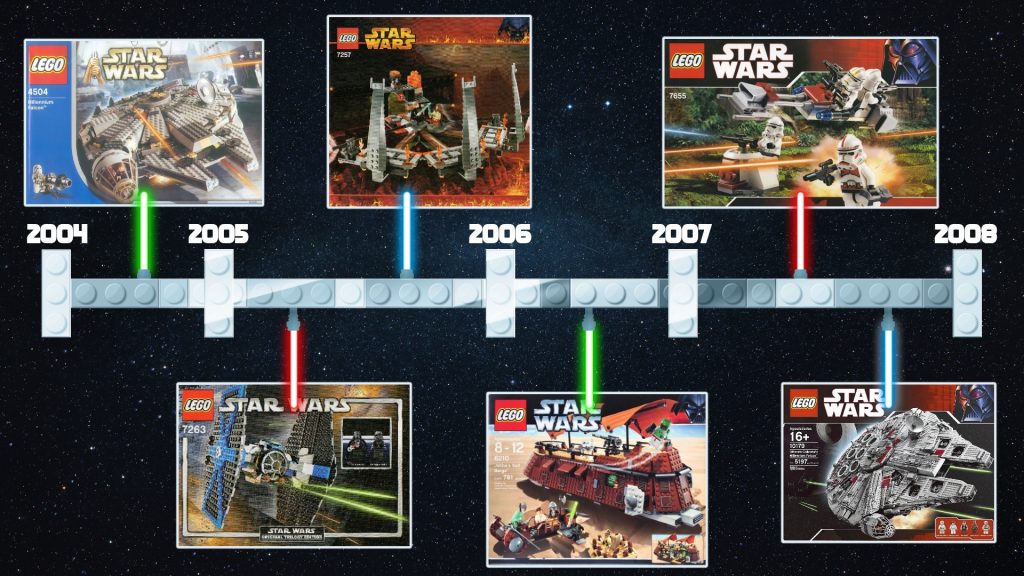
The mid-noughties proved a turbulent time for the LEGO Group as it flirted with bankruptcy, but helping to bring it back from the brink – alongside other product lines – was Star Wars. Yet even within that theme the company wasn’t content to play things safe, and instead made decisions that would influence the next 20 years of sets.
Top of that list was the switch from yellow minifigures to flesh tones, ostensibly spearheaded by the introduction of Lando Calrissian in 2003’s 10123 Cloud City and the dilemma he presented to the LEGO Group as a whole. (If Lando is black and has a different skin tone, does that mean yellow is equivalent to white?) The change happened midway through 2004 with 4504 Millennium Falcon, establishing a new precedent for licensed themes even beyond Star Wars.
That was the landmark turning point for LEGO Star Wars in this era, but at the same time as making huge shifts, the designers were busy experimenting with unusual oddities like light-up lightsabers. The first functional LEGO Star Wars minifigure debuted in February 2005 with 7263 TIE Fighter – Darth Vader rocking a light-up lightsaber – while more followed in the Revenge of the Sith wave in April. The compromises these characters required (arms locked in one orientation, batteries that couldn’t be replaced) meant they were ultimately short-lived, but it was a fun time to be a LEGO Star Wars fan.
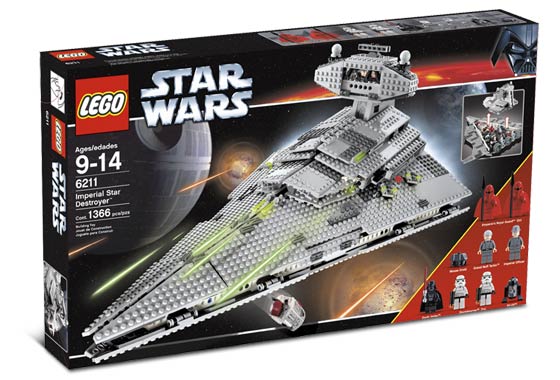

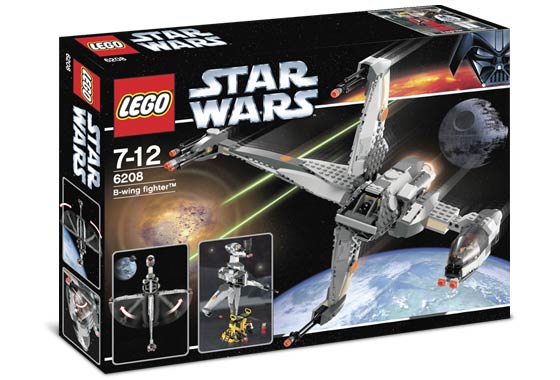
2006 arguably marked the beginning of the remake era proper, as the LEGO Group revisited a slew of original trilogy vehicles off the back of the prequel trilogy, while also turning its attentions to new and very cool sets like 6210 Jabba’s Sail Barge and 6211 Imperial Star Destroyer (the latter crystallising a new scale of capital ship playsets). But it was in 2007 that the LEGO Star Wars theme was rocked by two new formats that would truly set the course for the next two decades (at least).
January that year saw the debut of the first-ever LEGO Star Wars battle packs, while October brought us the biggest LEGO set of all time in 10197 Millennium Falcon. Weighing in at 5,197 pieces, the UCS set broke new ground for the LEGO Group – and paved the way for the giant sets we’ve seen in recent years, by not only proving the market for those products exists but also by establishing production capabilities within the company.
“It was kind of setting a new standard for how big a LEGO set could actually be,” LEGO Star Wars Creative Lead Jens Kronvold Frederiksen told Brick Fanatics in 2022. “Now, we’re making a lot of these big sets, but [the Falcon] was the first. I also remember the logistics around it – making a building instruction book of that size, and packaging it, we had to rethink the whole manufacturing [process] to be able to do that. So it opened some doors for making much bigger sets than ever before.”
Moving beyond the movies
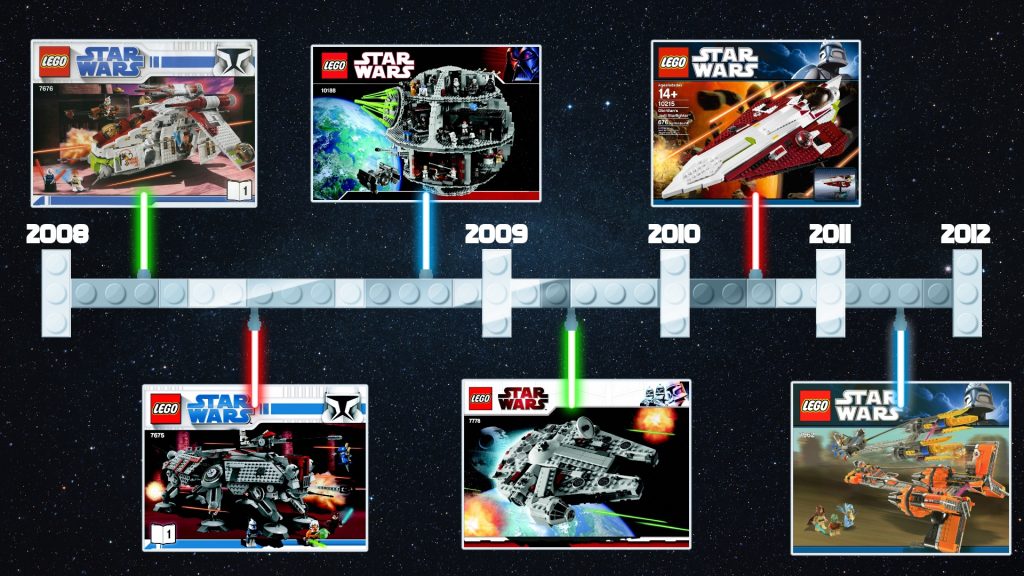
In the aftermath of Revenge of the Sith, only a handful of nerds clinging to message board theories believed that Star Wars Episodes VII through IX would ever become reality. And with no new movies to attach products to, the LEGO Group could easily have closed the door on its adventures in a galaxy far, far away.
But as we’ve all known since the Expanded Universe emerged to plug the gaps in George Lucas’s canon, there will always be more Star Wars material to mine. And fresh off the renewal of the LEGO Star Wars licence in 2007, Lucasfilm handed the LEGO Group all the new source material it could possibly want on a silver platter with the premiere of The Clone Wars.
That animated series kicked off with a movie that arrived to a tepid reception, and while it quickly built steam with audiences over the course of multiple TV seasons, the LEGO Group dove in right at the start with a huge launch wave of sets that covered everything from a new Republic Gunship and AT-TE to super-obscure vehicles like the V-19 Torrent and the Magna Guard Starfighter.
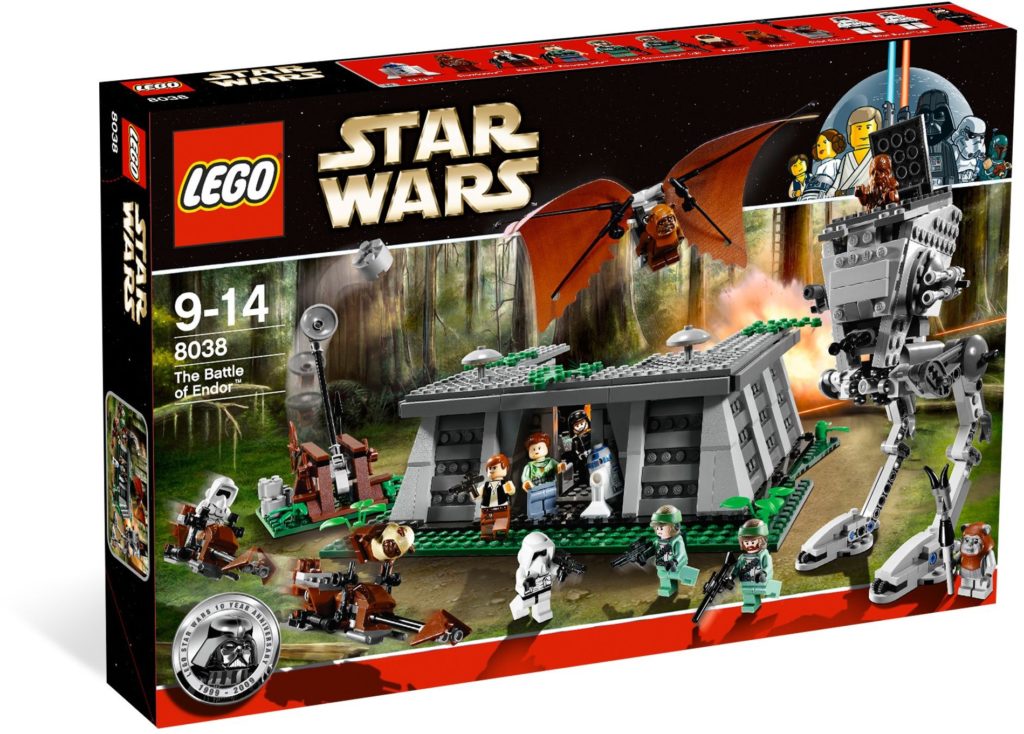
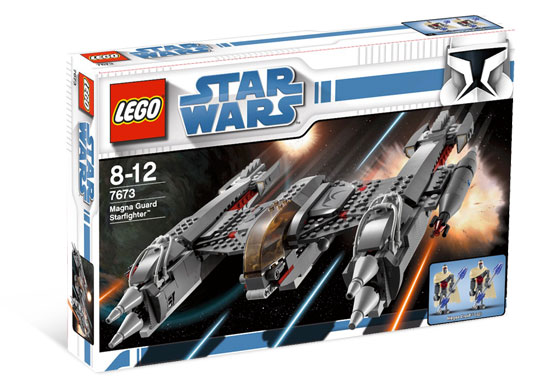
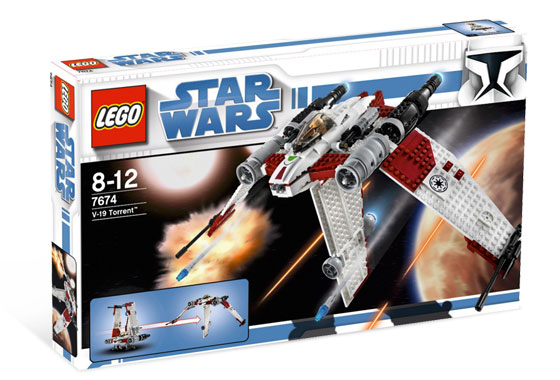
It was a merry time to be a fan of the prequel trilogy, save for one thing: the heavily-stylised minifigures that accompanied those early Clone Wars sets, which were sure to inspire nightmares in all but the bravest kids. Designed to resemble the bug-eyed animated characters seen on screen, they jarred with the wider LEGO Star Wars collection to a degree that the company would likely never allow in 2024.
Clone Wars sets of varying quality would continue to trickle in over the next few years, and while they weren’t all solid LEGO Star Wars gold, they at least offered the chance to take the theme in new and unusual directions. The LEGO Group didn’t leave behind the classic icons entirely, though: instead, it continued to iterate on its most successful designs while breaking new ground with sets like 10188 Death Star and 8038 The Battle of Endor, both of which still hold up today.
This period also saw the LEGO Group experiment with midi-scale designs for the first time (a concept that has returned in full force this year with 75375 Millennium Falcon, 75376 Tantive IV and 75377 Invisible Hand), launch its second prequel-inspired UCS vehicle in 10215 Obi-Wan’s Jedi Starfighter, make a brief pit stop in The Phantom Menace and revisit the concept of chrome characters with an exclusive Chrome Darth Vader minifigure to celebrate the theme’s 10th anniversary – 10,000 of which were randomly inserted into sets in 2009.
No man’s land
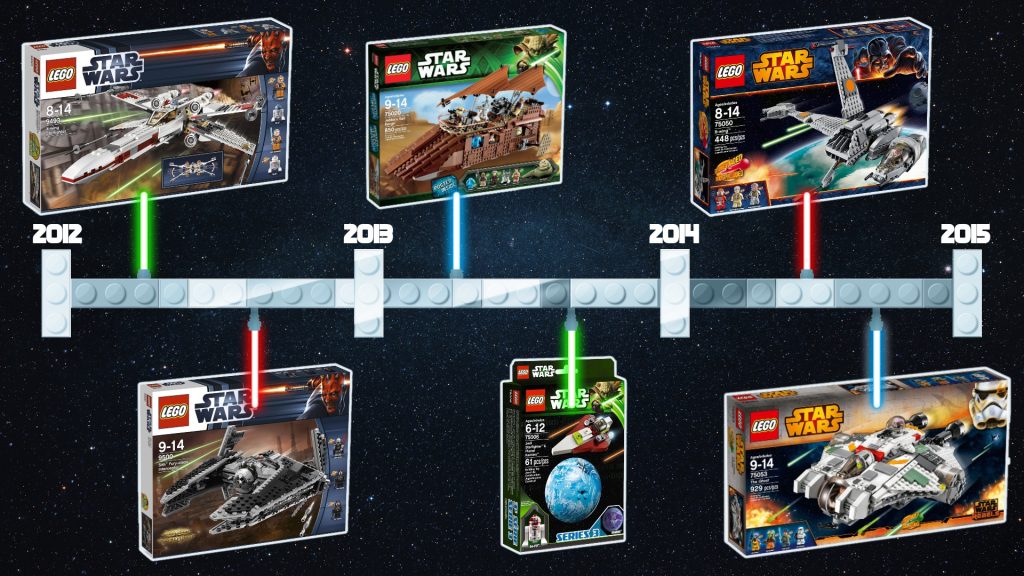
While The Clone Wars was still chugging away in 2012, Lucasfilm announced that the series would begin ‘winding down’ in early 2013, and the (then final) sixth season dropped in 2014. And though the sequel trilogy was just on the horizon with Disney’s acquisition of Lucasfilm in 2012, this was essentially the moment the LEGO Star Wars theme returned to no man’s land proper, and as a result had to find new ways to fill out its portfolio.
That first meant turning to the staples of the universe with 9492 TIE Fighter, 9493 X-wing Starfighter and 9495 Gold Leader’s Y-wing Starfighter, but there was room too for more unusual additions to the line-up: sitting happily alongside more obscure Skywalker Saga vehicles such as 9499 Gungan Sub and 9494 Anakin’s Jedi Interceptor were Old Republic video game sets like 9497 Republic Striker-class Starfighter and 9500 Sith Fury-class Interceptor.
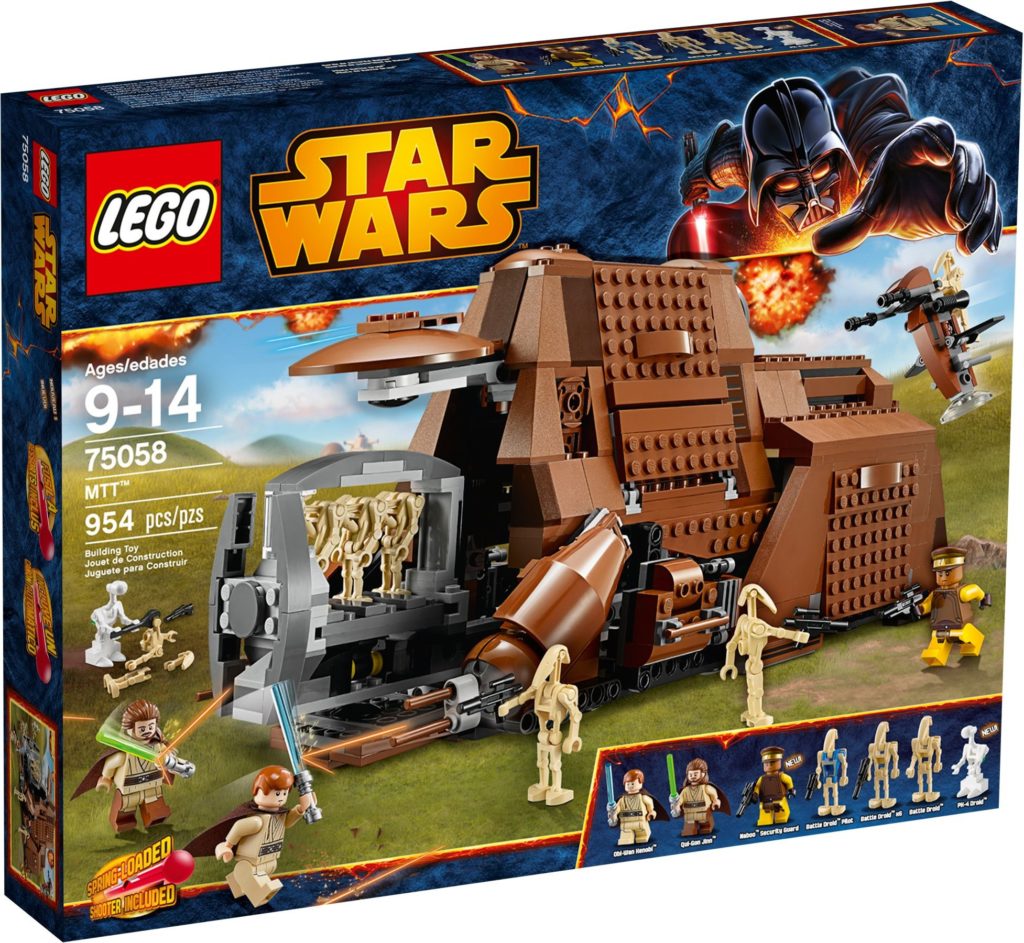
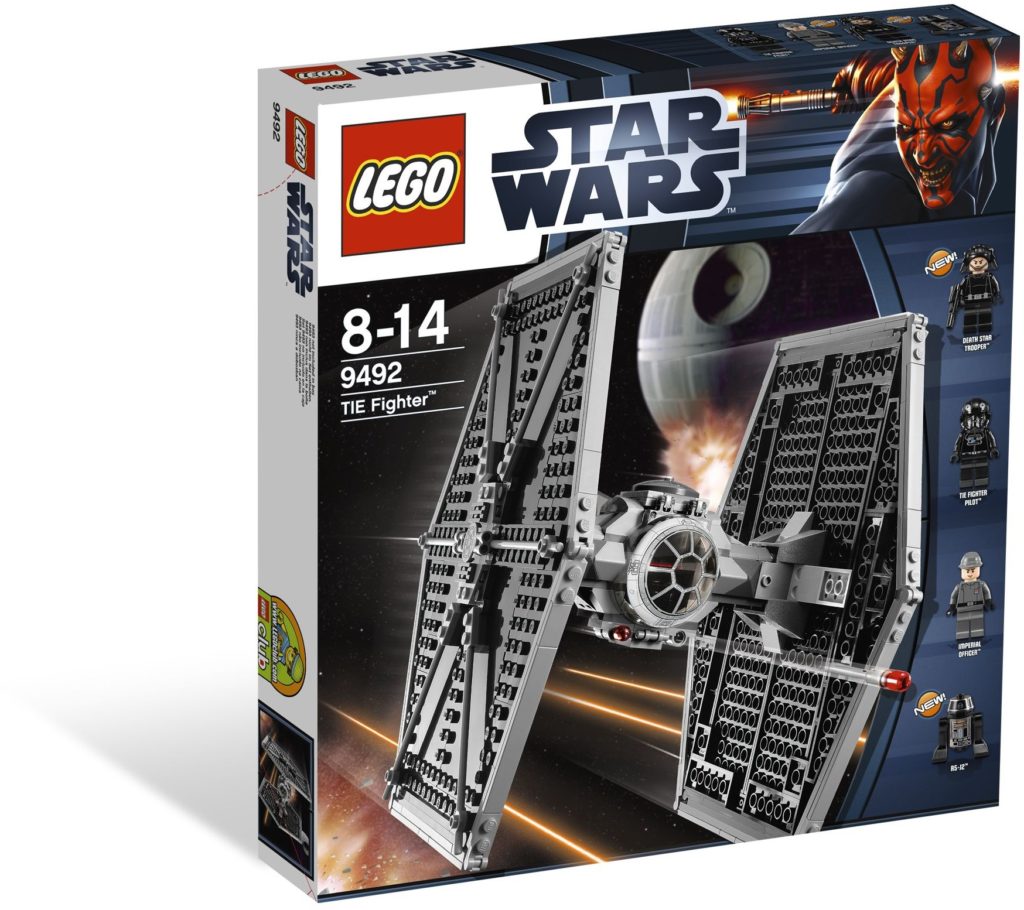
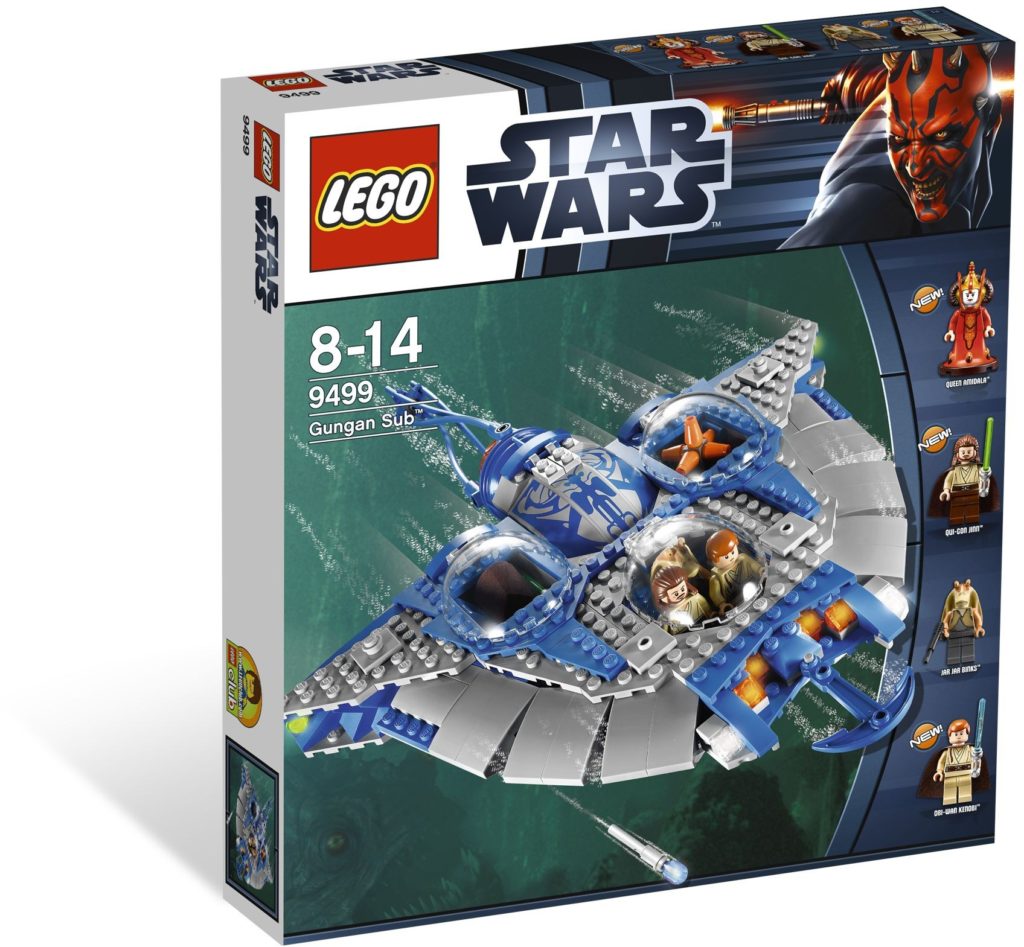
The LEGO Group also seized the opportunity to test a new subtheme of gimmick-driven sets in its Planets series, which saw minifigures and mini-models bundled in with giant printed spheres that could hang from your Christmas tree (if you were so inclined). These ran for a few series but ultimately failed to convince, and the final wave didn’t even make it to shelves in some regions.
This era is also pretty notable for marking the last time the LEGO Group turned to several staples of Star Wars, from characters like Count Dooku and Jabba the Hutt to vehicles like the regular minifigure-scale Republic Gunship, MTT and B-wing. By 2014, though, things were starting to get busy again: Star Wars Rebels debuted on Disney XD in October supported by a full wave of LEGO Star Wars sets, with three more seasons to come…
The dawn of the Disney era
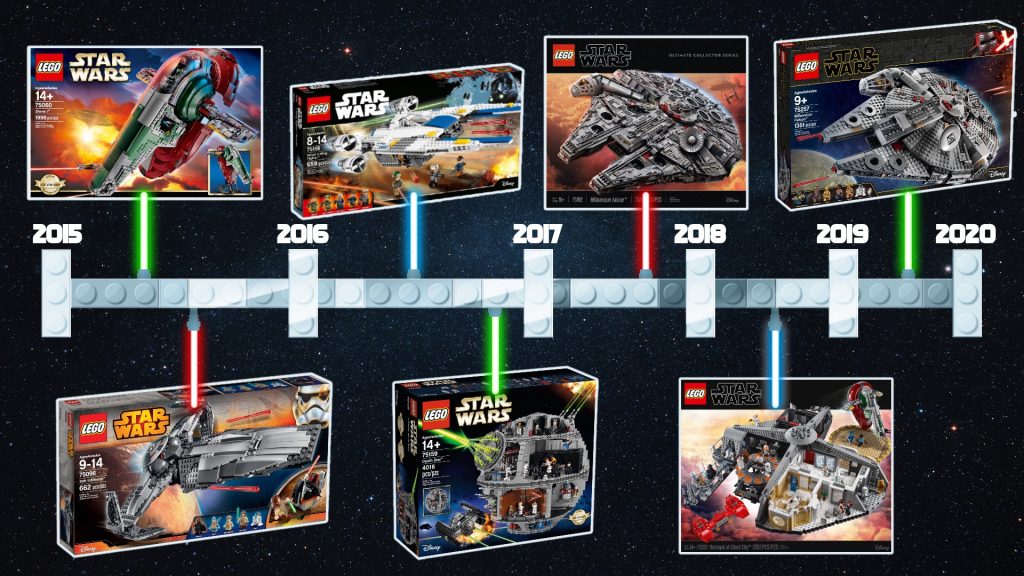
Just as 2015 presented the chance for Star Wars fans worldwide to once again flock to cinema screens, so too did it give the LEGO Group the opportunity to return to the roots of the LEGO Star Wars theme: sets hooked to brand new event movies. The Force Awakens left an indelible mark on pop culture, shifting the future of the franchise in a frustratingly familiar direction – so long Rebels and Empire, hello Resistance and First Order – while also rehashing tried and tested ships from a galaxy far, far away.
For the LEGO Star Wars theme, that meant revisiting X-wings and TIE Fighters with new paint jobs and tiny design tweaks. But for all that was already stale about those vehicles in 2015, these were easily the best iterations of them we’d ever seen in LEGO bricks – and while things got a lot more expensive very quickly (suddenly you were paying £90 for an X-wing), the models mostly delivered, ramping up the detail and build experience to something above and beyond what had come before.
While the LEGO Group took the chance to perfect its craft, it also had to deal with the slightly different working process that accompanies producing material on a film that hasn’t yet hit screens – and the challenges that entails. Namely: designing sets based on vehicles that are left on the cutting room floor.
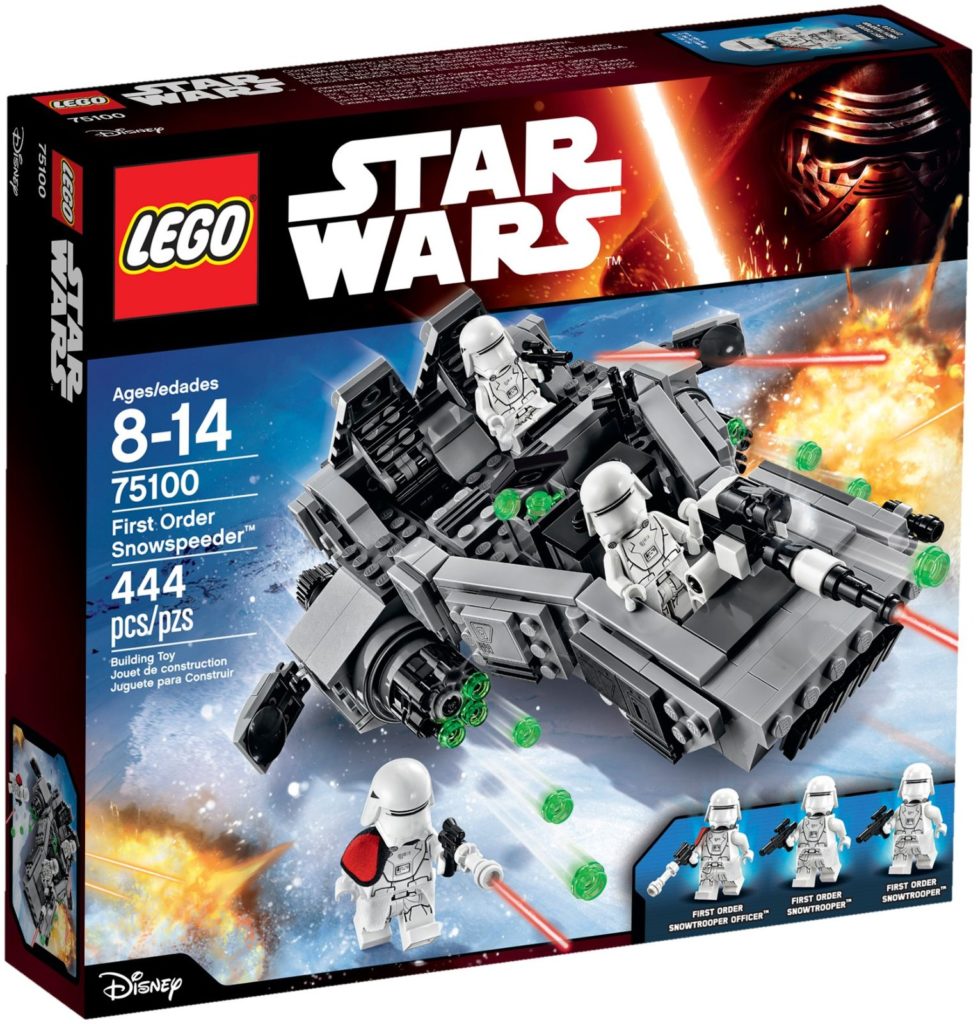
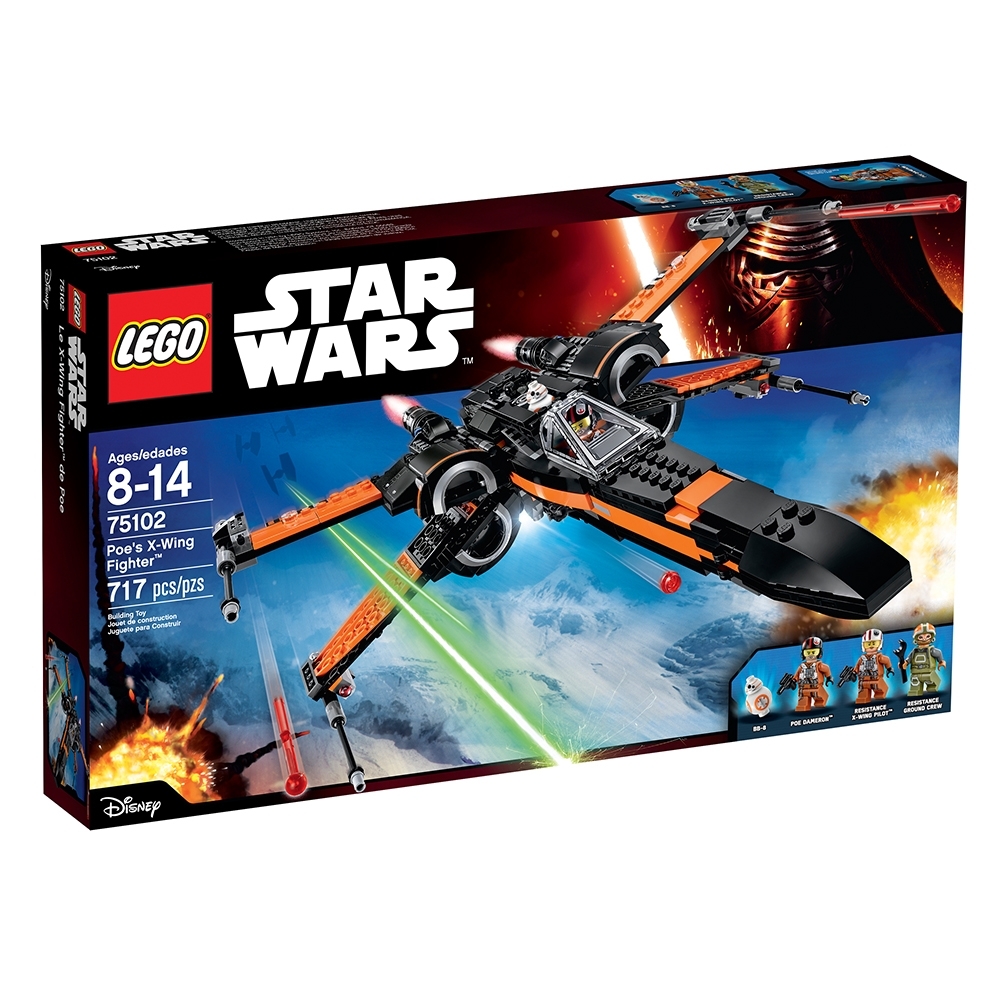
“Sometimes we have no idea if the model will appear in the movie at all,” Jens said in a 2019 roundtable. “It did actually happen to us! Sometimes it’s a bit of a disaster, but sometimes the idea turns out to be such a cool set that we don’t want to cancel it. For instance, 75100 First Order Snowspeeder from The Force Awakens. While working on the set we got a tonne of reference material, including shots of a 1:1 model built for the movie.
“Judging by the references, I was expecting it to appear in some kind of a chase scene. But the speeder was cut out completely! And we were like, ‘Oh, well… we already have this product here ready to be released!’ And we really had to consider if we should release it or not. This is when kids helped us to make the right decision: they liked the model even though they had zero context. And we did release the model and it turned out to be a pretty popular set.”
The next few years would see the LEGO Star Wars team attempt to balance huge launch days for the three sequel trilogy movies – dubbed Force Friday – with its wider portfolio, which still needed to revisit key moments from the other six Star Wars movies (and the wider Star Wars universe). The Ultimate Collector Series line was reserved exclusively for this purpose (we’ve still never had a sequel trilogy UCS set, unless you count the minifigures in 75192 Millennium Falcon).
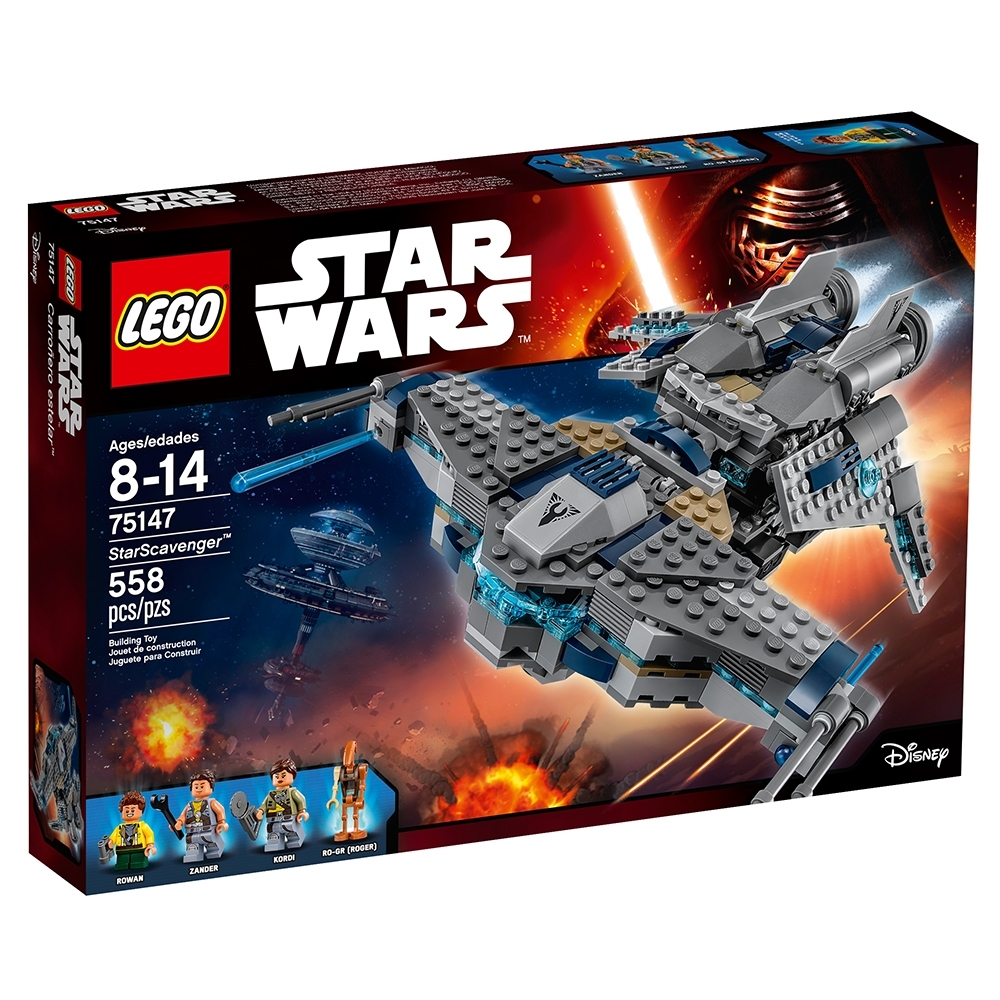
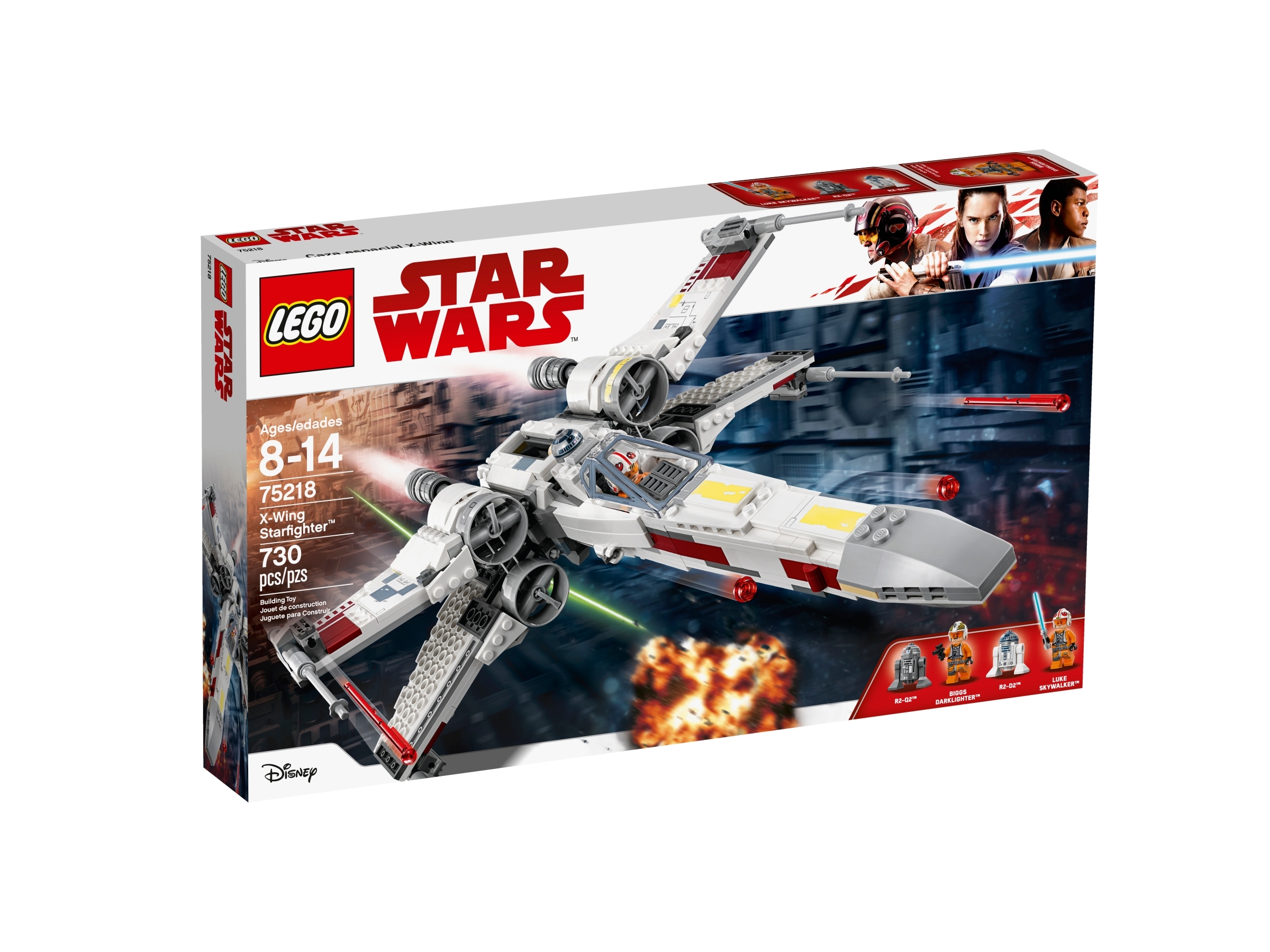
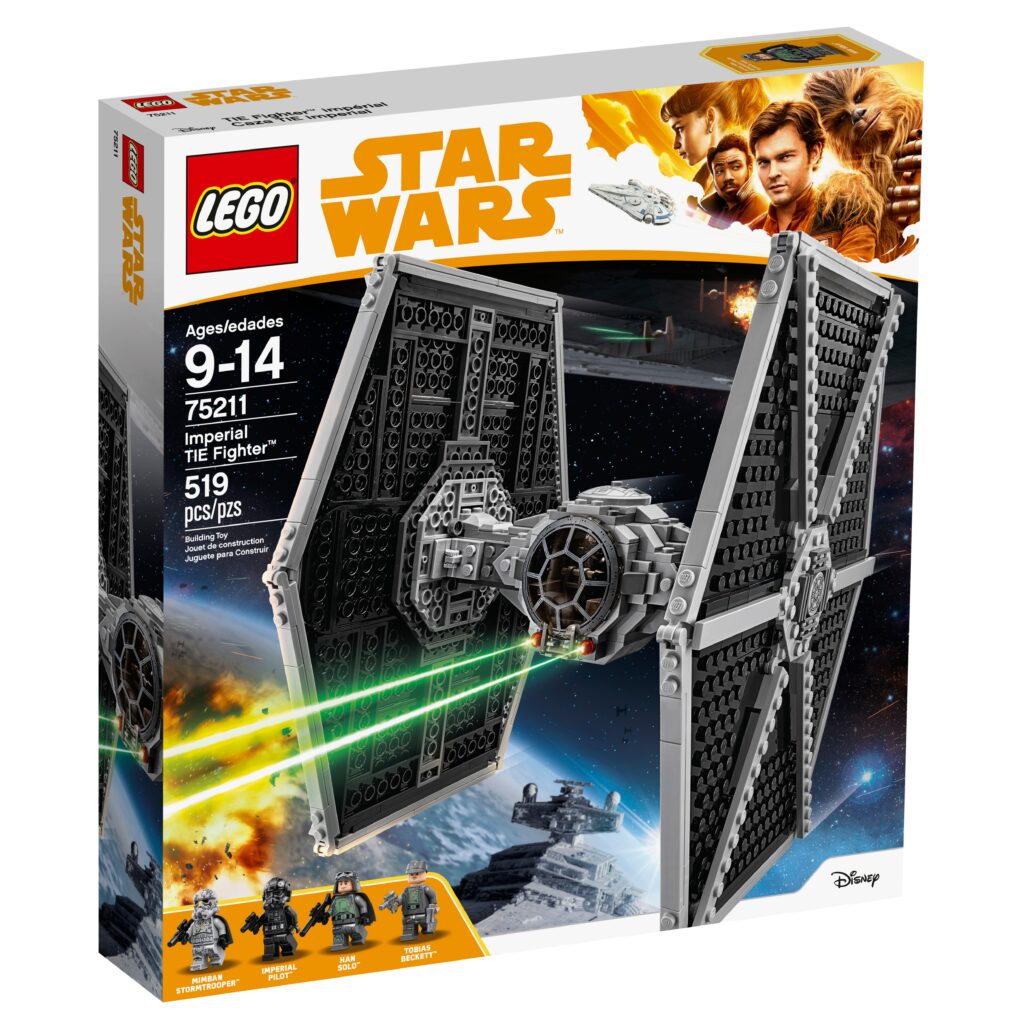
Stand-out sets from this era include 75060 Slave I, 2015’s The Phantom Menace wave – the last time the LEGO Group properly revisited Episode I – and pretty much the entire line-up of Rogue One models. The LEGO Star Wars team also tweaked and re-released 10188 Death Star with a refreshed minifigure line-up and a much higher price tag (under 75159 Death Star), perfected its play-scale X-wing, TIE Fighter and Falcon, and somehow still found time to conjure up its own contributions to Star Wars canon in The Freemaker Adventures.
It maybe wasn’t anyone’s golden age of LEGO Star Wars, and certainly feels like the least experimental in hindsight – which isn’t too surprising given everything the team had to juggle – but this four-year stretch still had plenty of memorable moments, including the launch of the Master Builder Series with 75222 Betrayal at Cloud City and the new biggest LEGO Star Wars set of all time in 75192 Millennium Falcon…
The prequel resurgence and the disposable age
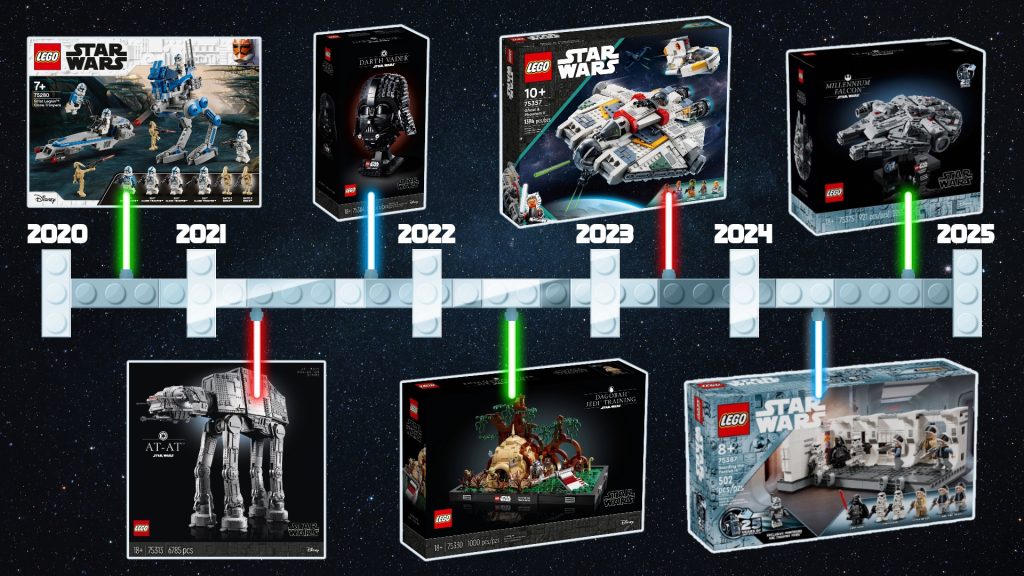
And so we arrive at the modern era, in which many fans would probably do well to remember the storied words of one Andrew Bernard: “I wish there was a way to know you’re in the good old days before you’ve actually left them.”
The past few years has seen a real resurgence of prequel-era sets after a period of dormancy, kick-started by the demand for 75280 501st Legion Clone Troopers – led by certain vocal fringes of the LEGO Star Wars community – and that supersized battle pack’s subsequent success. The LEGO Group has since gone overboard with new Clone Trooper variants and prequel trilogy and Clone Wars sets, all the while balanced against an age of largely disposable products.
We say ‘disposable’ not in the sense that these designs are worthless, but in that where the LEGO Group is destined to always revisit some Star Wars icons – X-wings, TIE Fighters, Jedi Starfighters – the volume of Star Wars content arriving on screens at the moment inevitably means that a huge chunk of the current portfolio is comprised of models we’re probably never going to see again.
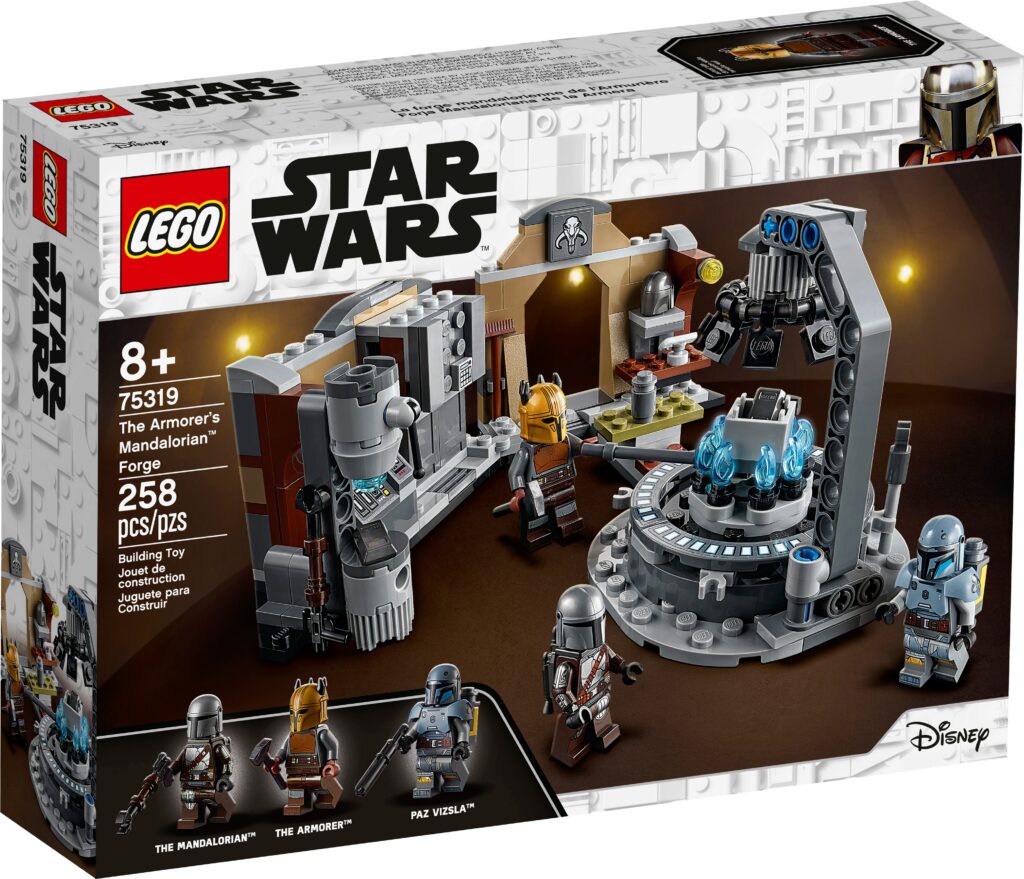
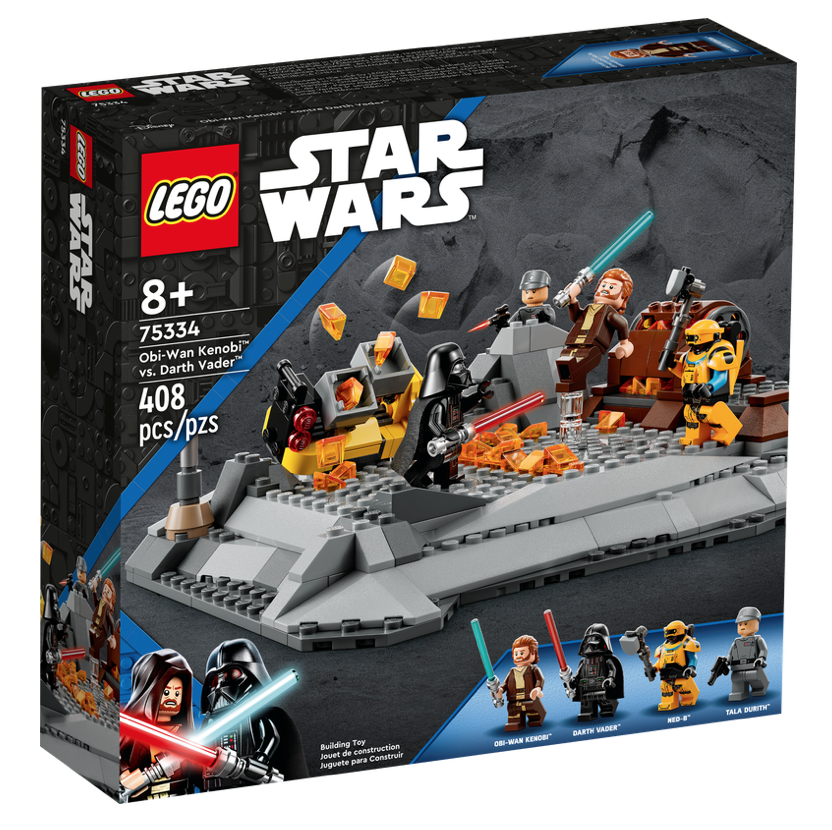
Those sets inspired by specific moments in TV shows, like 75319 The Armorer’s Mandalorian Forge or 75334 Obi-Wan Kenobi vs. Darth Vader, feel like flash-in-the-pan products designed to support a series that can’t sustain merchandise for those scenes beyond that specific moment in time.
This isn’t necessarily a bad thing. For one, it opens the doors to so many more different types of LEGO Star Wars sets than we’ve seen before, and of course so many new minifigures. Plus, 25 years of chipping away at this galaxy of content has left the LEGO Star Wars team as masters of variety: while some of these sets may be more forgettable than others purely for their subject matter, they aren’t coming at the cost of more memorable designs in the wider LEGO Star Wars line-up.
So even while we’re still getting a fairly consistent number of sets per year, the LEGO Group is always finding new ways to shake things up – whether through subthemes like the Helmet Collection or Diorama Collection, new and interesting takes on classic designs (the first-ever UCS Landspeeder and AT-AT, for example), or even tackling certain blind spots for the first time (hello, 75365 Yavin 4 Rebel Base).
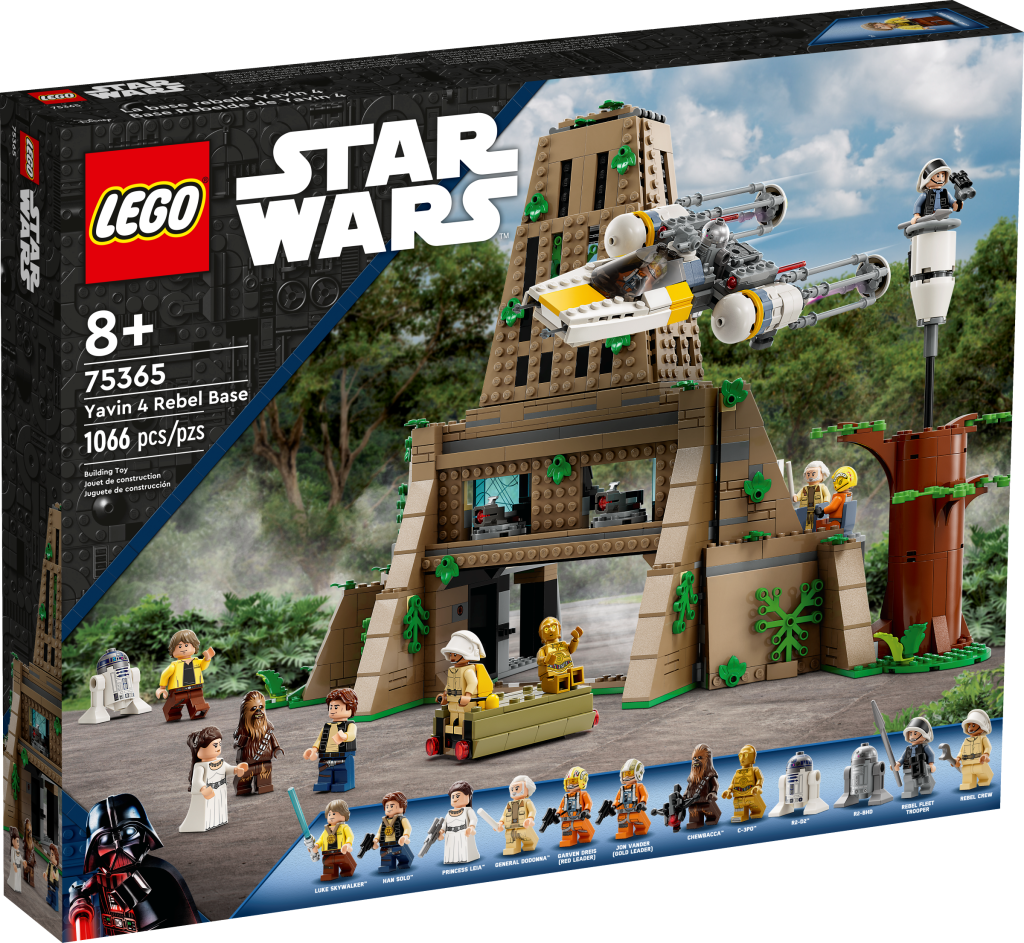
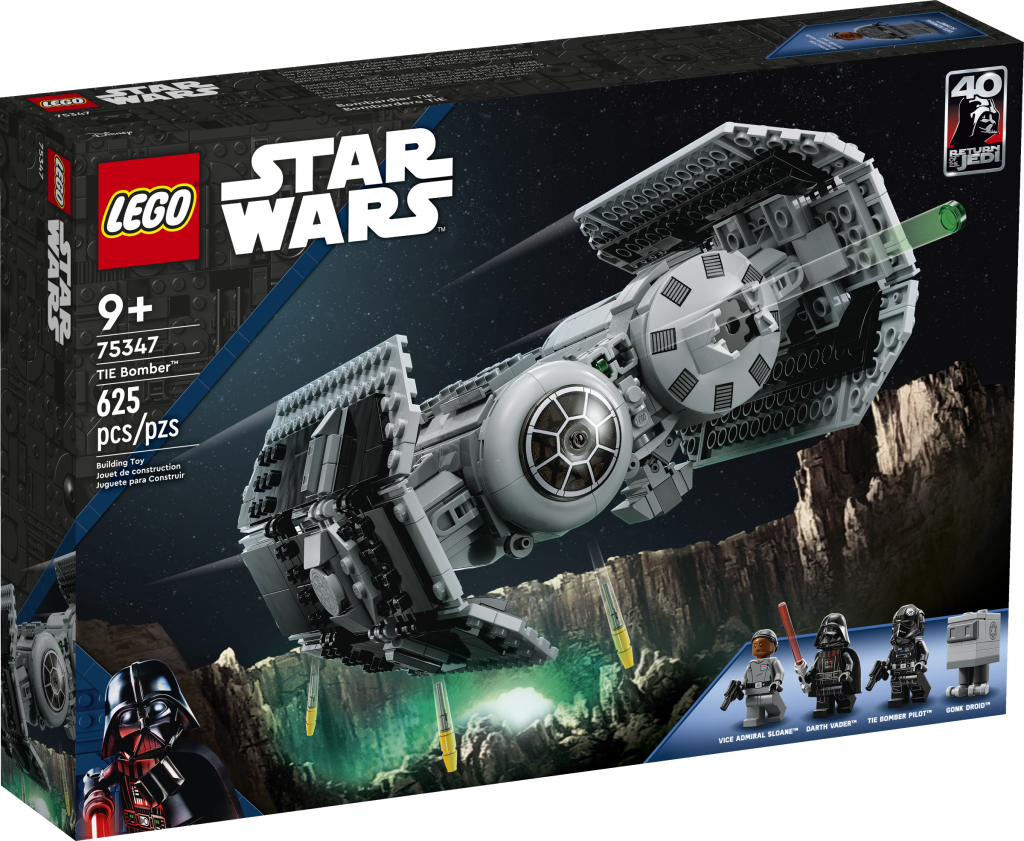
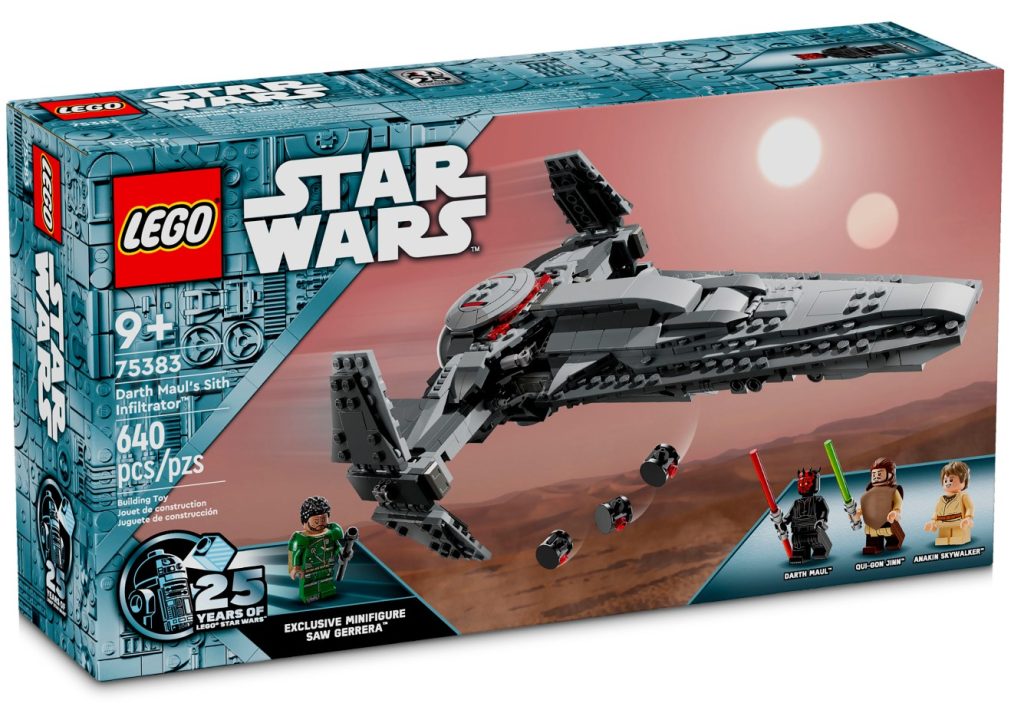
The individual designs are arguably better than ever, too – at least for those ships now on their second, third or fourth iteration – and it’s hard to see how the LEGO Group could improve on the latest Ghost, TIE Bomber or TIE Interceptor. Throw into the mix the 25th-anniversary range this year, which is bringing us obscure and highly-requested minifigures like Saw Gerrera and ARC Trooper Fives, and it’s a very good time to be a LEGO Star Wars fan.
You can check out the current range of LEGO Star Wars sets right now at LEGO.com (and don’t miss our LEGO deals page for the best LEGO Star Wars offers around at the moment). May the 4th is right around the corner, so get ready for this year’s headline LEGO Star Wars shopping event by familiarising yourself with all the promos ahead of time.
For now, let us know your favourite era of LEGO Star Wars (and why!) in the comments.
Support the work that Brick Fanatics does by purchasing your LEGO using our affiliate links.
Author Profile
- I like to think of myself as a journalist first, LEGO fan second, but we all know that’s not really the case. Journalism does run through my veins, though, like some kind of weird literary blood – the sort that will no doubt one day lead to a stress-induced heart malfunction. It’s like smoking, only worse. Thankfully, I get to write about LEGO until then.
Latest entries
Latest15/05/2024Unboxing LEGO Series 26 Space minifigures with Brick Search
June 2024 sets15/05/2024LEGO Disney 43247 Young Simba the Lion King price confirmed, pre-orders open now
10333 Barad-dûr15/05/2024LEGO Icons 10333 The Lord of the Rings: Barad-dûr review
10333 Barad-dûr15/05/2024LEGO reveals why Barad-dûr was the obvious choice after Rivendell

